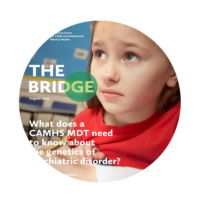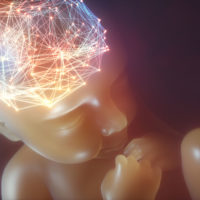Brain
-

Neuroscience Edition
Welcome to this Neuroscience themed edition of The Bridge.
Read more
The Royal College of Psychiatrists is currently promoting the neurosciences in its curriculum, for training Psychiatrists of the future. One of the many reasons for this is to develop more “Parity of Esteem” between physical and mental health conditions. -

Identifying imaging biomarkers in the neonatal brain
The past decade has seen great improvements in magnetic resonance imaging technologies, such that it is now possible to image the developing brain in utero. In 2018, Dafnis Batalle and colleagues compiled an Annual Research Review for the Journal of Child Psychology and Psychiatry, where they evaluated the current status of neuroimaging research in neonates and paediatrics to determine the origins of neuropsychiatric and neurodevelopmental disorders.
Read more -

A mother’s touch: a key player in fine tuning the function of our genome
There is debate as to the importance of genetics in determining our behaviour. This debate has become enshrined perhaps due to the early focus of genetics on searching for DNA variation in our genome (termed a polymorphism) that affected protein structure, the hypothesis being that such a protein variant would not be working optimally in our body throughout our life.
Read more -

Cognitive flexibility in OCD: challenging the paradigm
Data from a new study by Nicole Wolff and colleagues suggest that cognitive flexibility can be better in children with obsessive-compulsive disorder (OCD) than typically developing controls.
Read more -

Cortical thickness can differentiate conduct disorder subtypes
A study by Graeme Fairchild and colleagues has used a neuroimaging approach to compare the structural organization (or “covariance”) of brain regions between youths with different subtypes of conduct disorder (CD) and healthy controls (HC).
Read more -

JCPP Editorial: Volume 60, Issue 03, March 2019
“Can dysregulated myelination be linked to ADHD pathogenesis and persistence?” by Klaus-Peter Lesch
Read more -

Most Cited JCPP Articles #7 of 60
Most cited JCPP papers #7 of 60: Development of the adolescent brain: implications for executive function and social cognition
Read more -

Most Cited JCPP Articles #9 of 60
Most cited JCPP papers #9 of 60: Antenatal maternal stress and long-term effects on child neurodevelopment: how and why?
Read more -

Most Cited JCPP Articles #11 of 60
Most cited JCPP papers #11 of 60: Infant intersubjectivity: Research, theory, and clinical applications
Read more -

Most Cited JCPP Articles #25 of 60
Most cited JCPP papers #25 of 60: The neural correlates of attention deficit hyperactivity disorder: an ALE meta-analysis
Read more